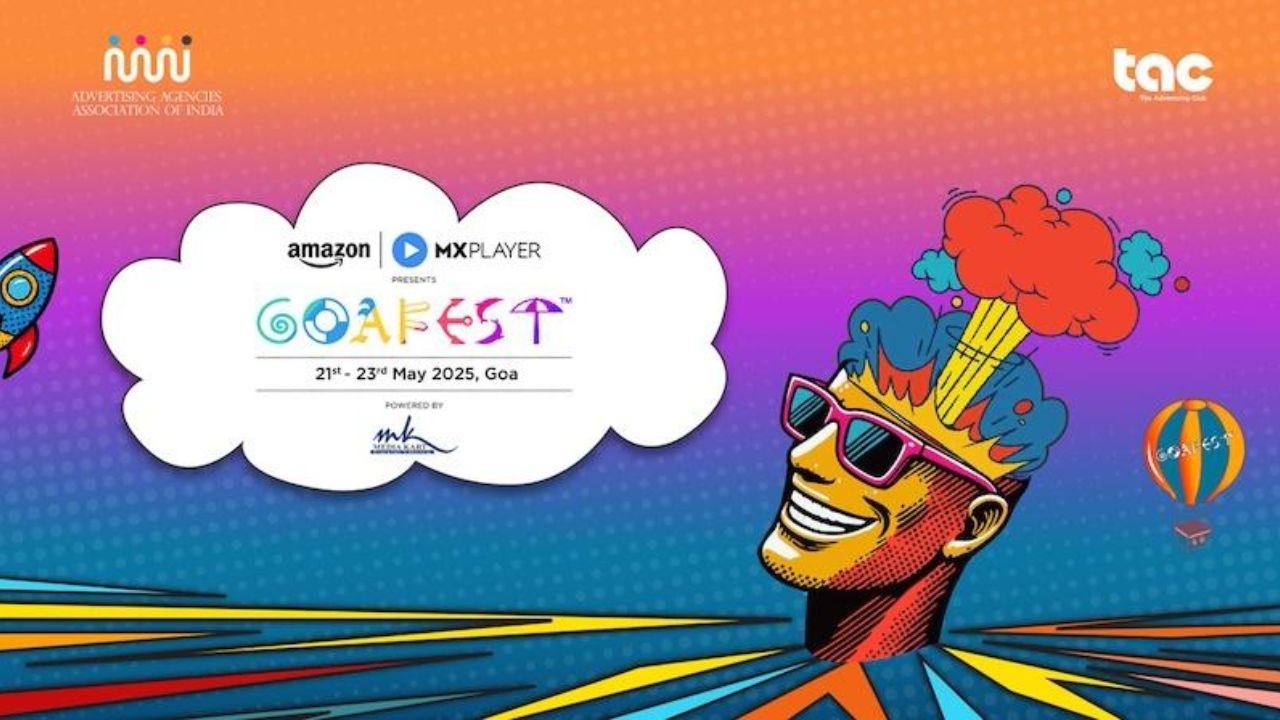Goafest 2025: What ignited the jury room?

Taking the stage with a jury’s-eye view into this year’s most compelling work, Anupama Ramaswamy, Chief Creative Officer and Joint Managing Director of Havas Creative India, delivered a powerful reflection on the state of purposeful creativity. The campaigns that stood out, she noted, were not just socially conscious. they were narratively bold, rooted in craft, and offered new ways of seeing the world. “Purpose without creativity is just information,” she remarked. “What we looked for was boldness, a new lens, and campaigns that sparked uncomfortable conversations. with elegance.”
Ramaswamy spoke about several entries that moved the room and challenged convention. Among them was Lays and UNA’s 'Farm Equal,' which shed light on the under-recognised role of women in farming through a fresh narrative lens. Reliance’s 'Pink Star Rating' introduced a new global benchmark by creating a safety rating system for women travellers, similar to hotel stars but rooted in social utility. Mahindra’s 'Nanhi Kali' initiative used football to empower young girls and disrupt ingrained gender roles, while Navneet’s Colour Blindness Book addressed inclusivity in education for over a crore Indian children with colour vision deficiency.
She also highlighted Sabhyata’s Diwali campaign, which placed corporate-working mothers at the heart of festive storytelling, a stark departure from conventional homemaker tropes. Vaseline’s campaign for the transgender community stood out not just for its inclusivity but for product innovation that addressed real, unmet needs. Even globally, work like Japan’s surname reform campaign made a quiet yet forceful statement on gender equality by advocating for a woman’s right to choose her last name after marriage.
Through it all, Ramaswamy emphasised that while many of these campaigns dealt with meaningful causes, it was the power and originality of the ideas that truly earned recognition. “They were sharp, human, and executed with craft. They weren’t preaching, they were provoking,” she said.
In her closing remarks, she distilled the session’s core insight with clarity: a big cause might open doors, but it’s the big idea that wins hearts, and awards. The industry, she said, must continue to treat creativity not as an add-on to purpose, but as its greatest multiplier. Creativity, done right, isn’t just reflective of change, it is the catalyst.
Senthil Kumar on Rewatchability and original execution: What makes an ad film stand out
Adding further depth to the jury room perspective, Senthil Kumar, Chief Creative Officer at VML India, brought a filmmaker’s lens to the discussion, focusing on what makes an ad film truly memorable. “The simplest test is this, would you watch that film again?” he said, underscoring the enduring value of rewatchability as a metric of success. His session took a closer look at the top advertising films produced in India over the past year, unpacking what made them resonate with both audiences and jurors.
Among the standouts was the Lahori Jeera film, which Kumar praised for its visual consistency and sharp branding. “Every frame had the brand, it wasn’t just present, it was alive,” he noted, highlighting how narrative integration and product visibility worked hand in hand. He also discussed Veeba’s Desi Chinese spot, where the unexpected twist of Chinese characters adopting Indian habits was both culturally cheeky and communicatively effective. “The soundtrack, the hook, the twist, it all just clicked.”
Kumar pointed to the Snickers campaign featuring Rohit Shetty as a masterclass in execution. “The idea itself wasn’t new, but the way it was done made it feel fresh,” he said, stressing that originality in craft can often elevate even familiar formats. Similarly, Dream11’s star-studded ad featuring actors and cricketers worked because of its dialogue-driven storytelling and character interplay. “It’s the kind of ad that keeps you hooked line after line,” he added.
One campaign that captured the spirit of transformation was Adani’s village electrification ad. With the line “Pehle pankha aayega, phir bijli aayegi,” the film conveyed infrastructural impact with poetic realism. For Kumar, it was a reminder that even corporate campaigns can feel human and grounded when rooted in authentic storytelling.
Together, both sessions offered a layered view into the jury process—one that values purpose, but prizes originality, craft, and memorability above all. Whether through social impact or strong storytelling, the common denominator was clear: creative courage is what truly ignites the room.
News